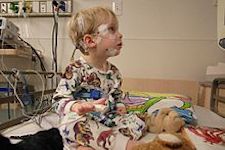
ProPublica, an investigative news organization, posted its Surgeon Scorecard with complication rates for almost 17,000 surgeons on July 13, based on Medicare billing records.
So here’s more data for patients to go shopping with.
It found that overall complication rates, based on hospital readmissions within 30 days of the surgery and death during the initial stay, were 2-4 percent during the five-year study period.
Medscape reported that “Remarkably, almost 800 surgeons who performed at least 50 procedures had no complications to their name, proof that their colleagues have room for improvement,” ProPublica said.
The procedures in question are knee and hip replacement, gallbladder removal, prostate removal, prostate resection and three types of spinal fusion — one involving the neck, and two involving the lower back. ProPublica selected these eight procedures because they are typically performed on healthy patients and “are considered relatively low risk.”
MedScape reported that “The database excludes trauma and other high-risk cases more prone to complications as well as procedures performed on patients admitted from a hospital emergency department or some other healthcare facility.”
Some physicians worry that the inability to fully account for individual patient differences in the study could motivate surgeons to turn down complication-prone cases to avoid poorer numbers on Surgeon Scorecard.
MedScape reported that Donald Goldmann, M.D., chief medical and scientific officer at the Institute for Healthcare Improvement, said that Surgeon Scorecard doesn’t go far enough in helping patients choose a surgeon.
‘”This is just about readmissions and deaths,’ said Dr. Goldmann, who is also a clinical professor of pediatrics at Harvard Medical School. ‘”That’s interesting, but that’s not going to drive my decision.”
“If I’m having a prostate procedure, I want to know my risk of winding up impotent, or incontinent. If I have a knee replacement, I want to know what my functional status is likely to be a year from now. That’s what matters to the patient.”






